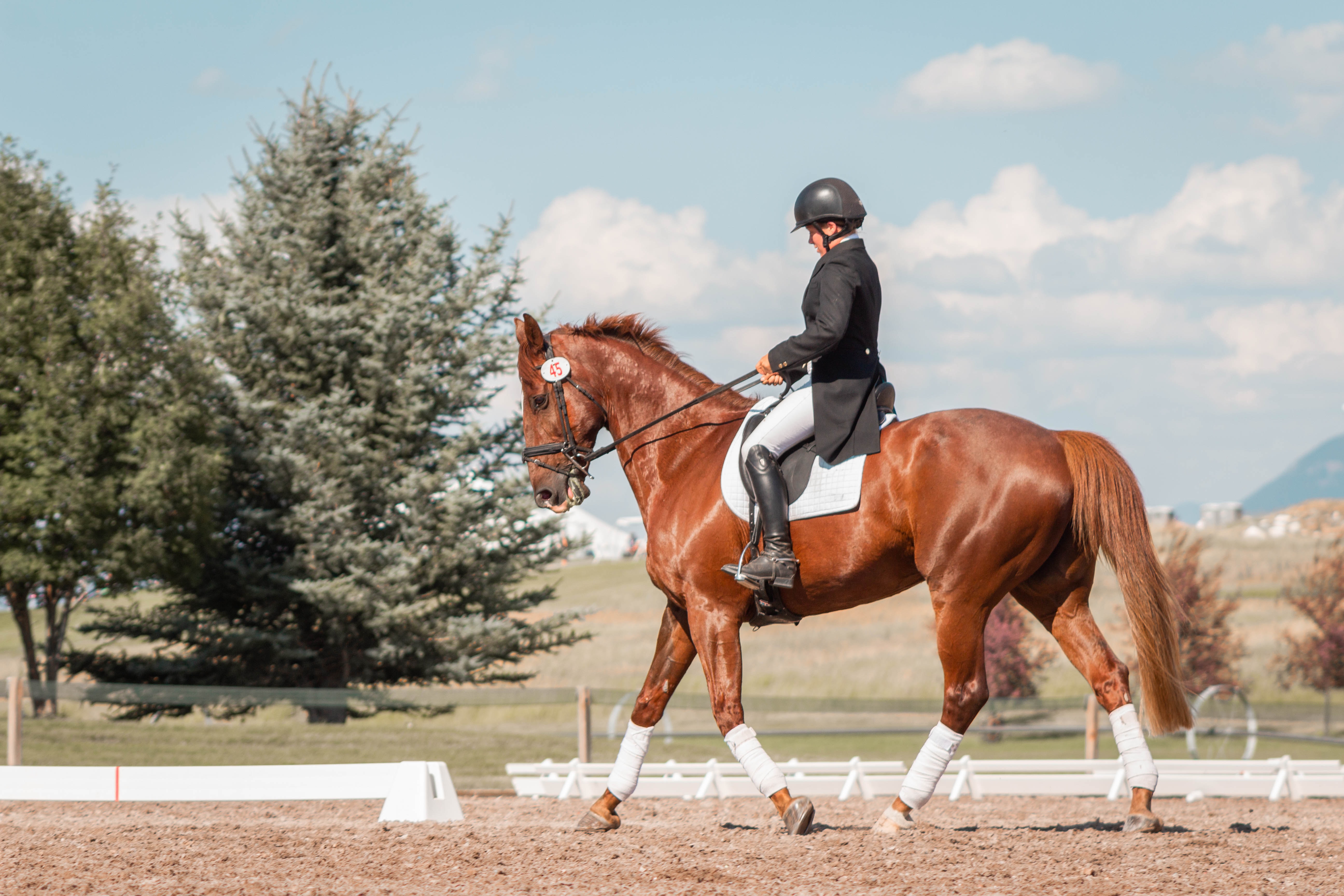

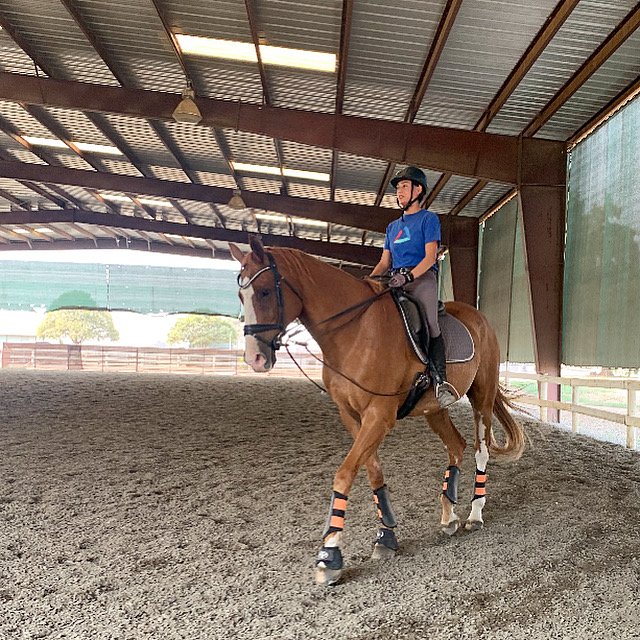 Open source coded
by Morgan Coyle
Open source coded
by Morgan Coyle
Demystify the sitting trot with these steps...
Make sure you have mastered the posting trot before attempting to sit the trot

Relaxation in the body is key. If your body is supple, especially your hips, then you will move more freely with the horse.

If your muscles are tense, then you are going to bounce in the trot. The bouncing motion will irritate the horse. Tension is a mistake most beginners make because they are told to “hold a tight core”. While this is true, you must not be too tight. If you are too tight your position will hinder the horse's natural movement. Tension can also cause you to lean forward, lose balance, or fall off.
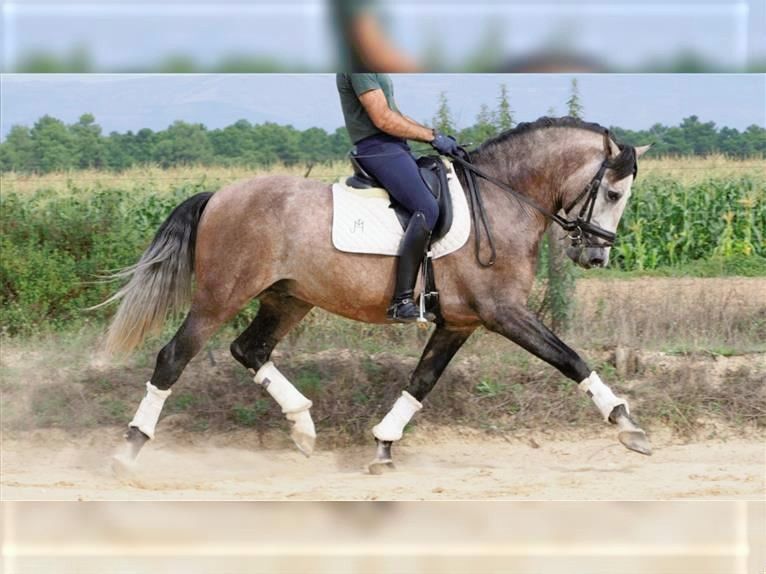
To sit the trot, you must create a trot that is capable of being
sat. Establishing a collected trot ensures the horse is lifting
through its back and thus the motion of the trot is much easier to
sit.
When the horse is collected, it is engaging all the proper
muscles, so it builds the right kind of fitness.
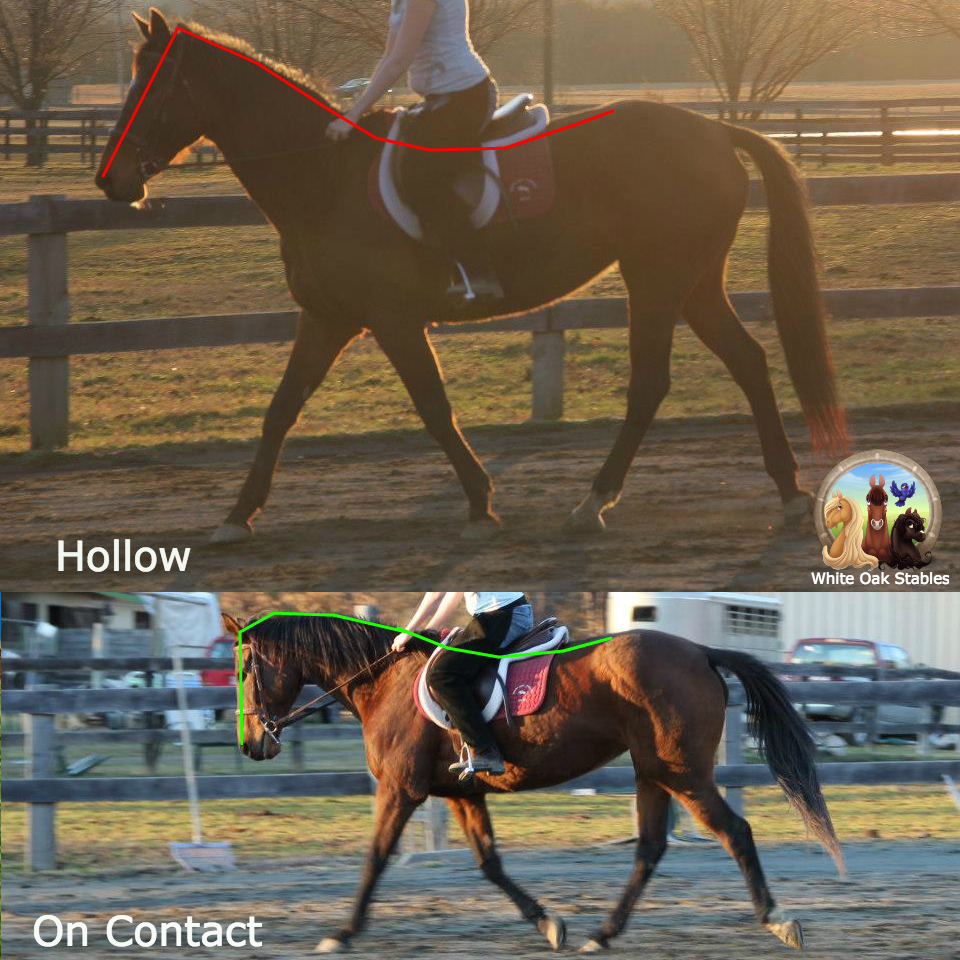
If the horse is trotting with a hollow back, then the motion of the trot will be difficult to sit. A hollow back might lead to injury as the horse is not using its muscles properly.
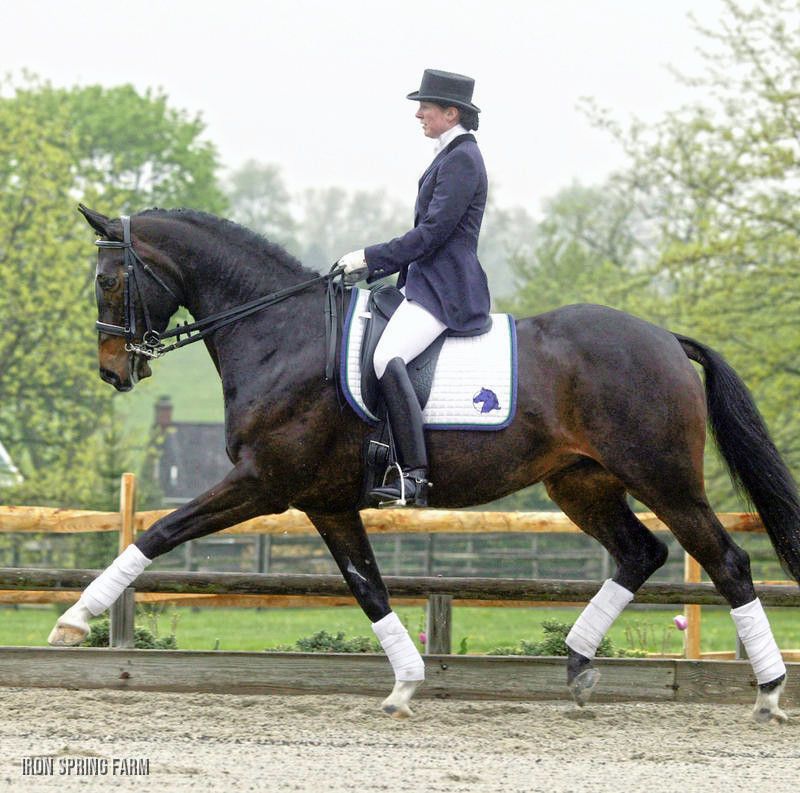
Think of letting your body become one with the horse’s body. Relax your seat & legs. Let your legs hang in an elongated manner. Point your toes up. The fleshy part of your inner thigh should carry most of the weight.
Visual: Think of standing on the ground with knees slightly bent. That is how you want to look while sitting on the horse. If the horse were to suddenly disappear from beneath you, you’d want to be able to land on the ground without falling.
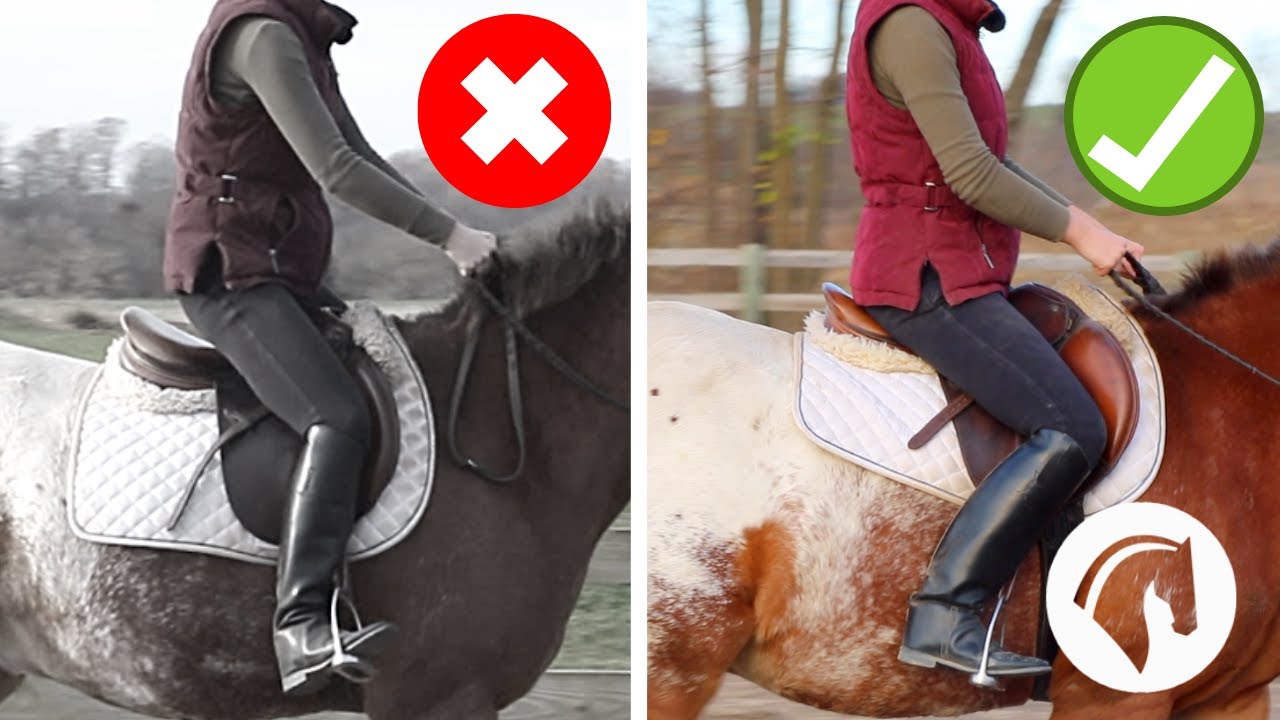
Bouncing on the horse's back is irritating to the horse and equally uncomfortable for you. If you start bouncing, post the trot until you can create a collected trot. Maintain posting trot for ~5 strides then try sitting again. Repeat as needed.
You can also try transitioning to walk for ~5 strides, but don’t create a downhill energy in the trot transition.
There could be a few issues…
You must train horses with clear communication, so they can easily understand. Remember, they cannot speak human language; they only speak horse language. Use their language to communicate with them.
There could be a few issues...
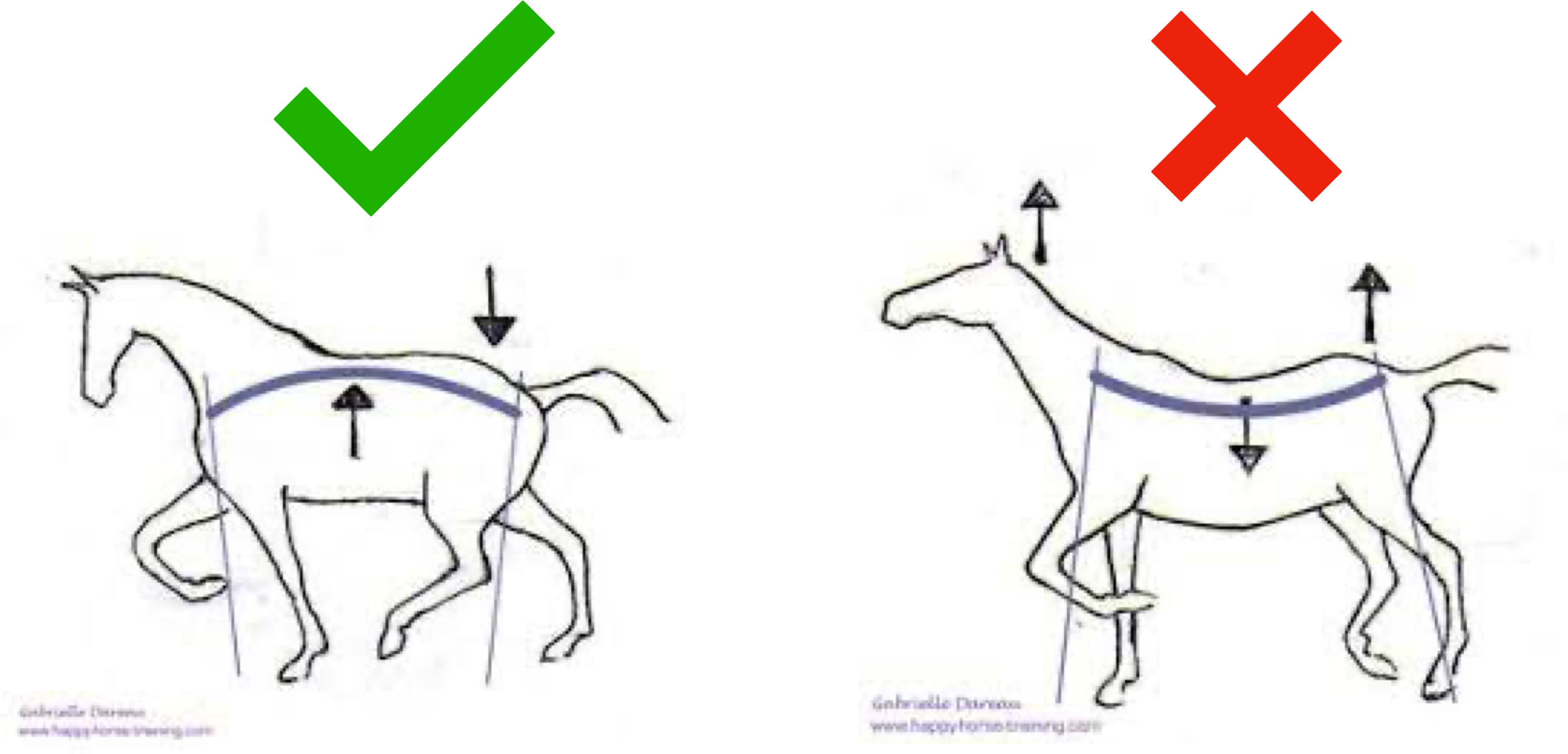
When the horse’s inside hind steps underneath its body, it will be ready for any transition. The amount of bend in the horse’s body will encourage the horse to lift its back for a more collected trot. Always repeat on the other side, so the horse develops muscles evenly.

The relax reign exercise helps the horse exit flight response. The bending motion of the circle combined with the disengagment of the horse's hindquarters promotes a physiological calm response similar to swaddling a baby with a towel. The circular motion lulls the horse while activating the thinking part of their brain as opposed to the flight part of their brain.
This is a rider issue. Riders bounce when they have a bad position in the saddle. Here are some things the rider can do to fix their position:
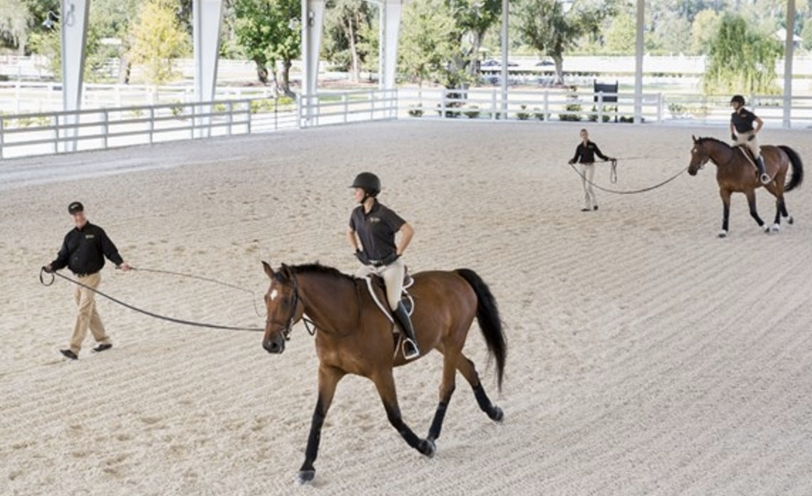
Do these stretches on both sides:
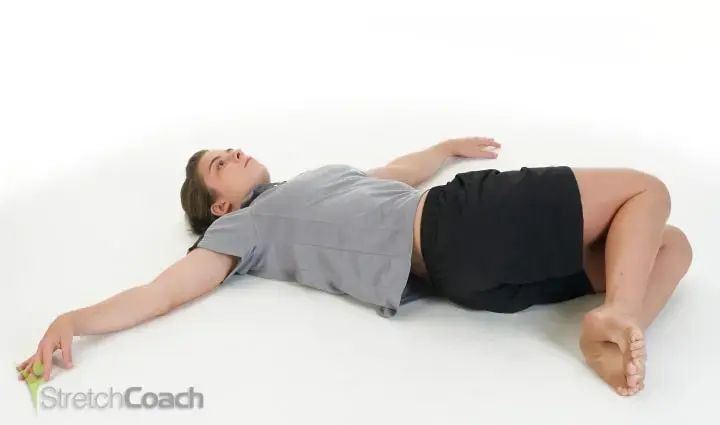


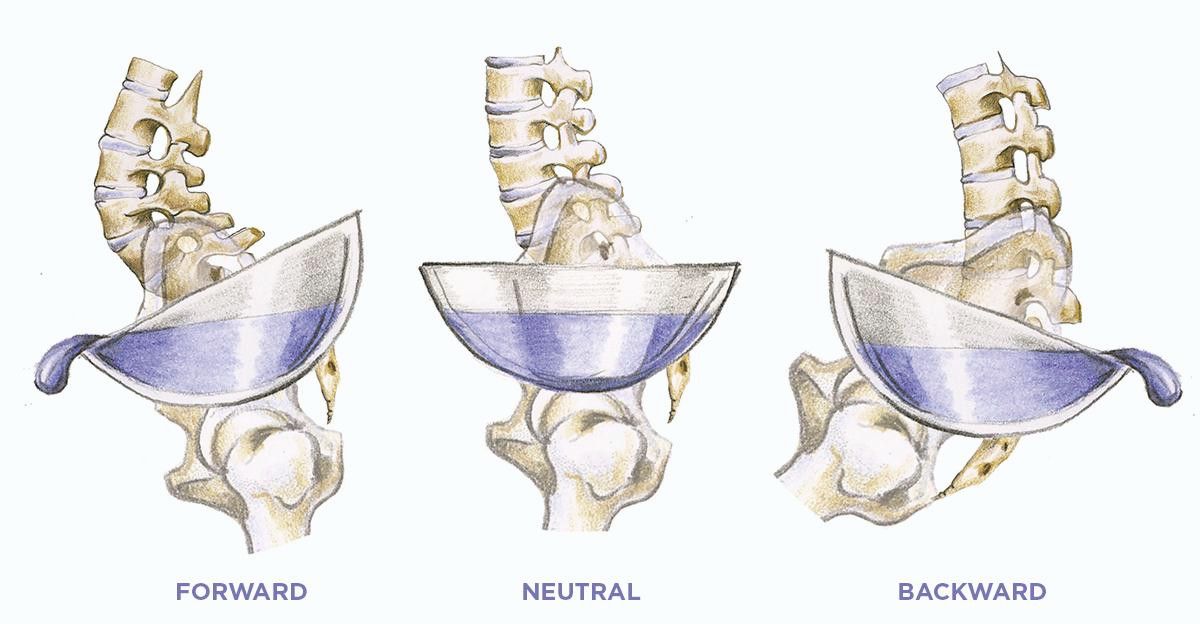
Visual: Think about trying to balance a bowl of water without spilling. If your pelvis is unbalanced, then you will spill the water.